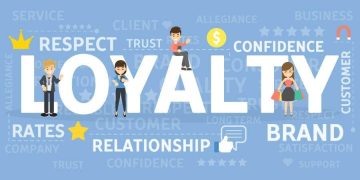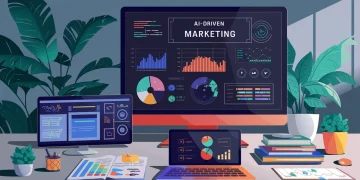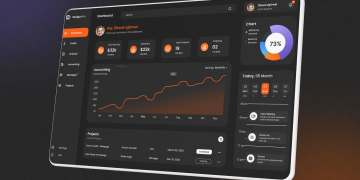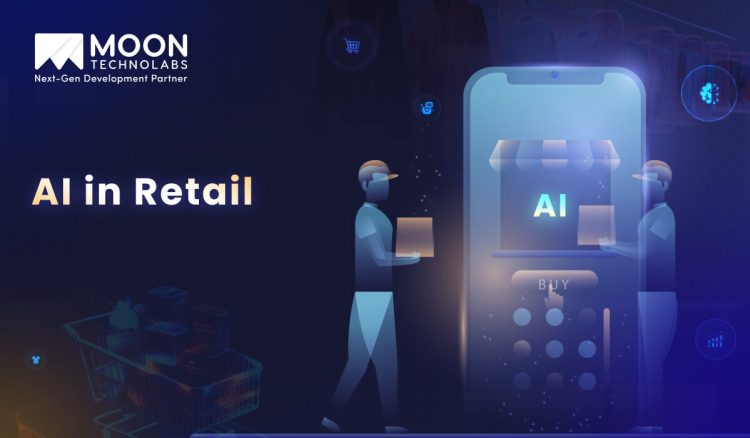In today’s rapidly changing world, data is no longer just a byproduct of business operations—it’s the driving force behind industry transformation. From health to retail, from tech to finance, the question that many leaders are asking is: Can data predict the future of your industry? In this article, we’ll dive into how data is shaping the future of various industries and whether it really has the power to forecast the next big shifts.
The Age of Data: A New Era of Insight
We are living in what can only be described as the “Age of Data.” Every click, transaction, and social interaction generates vast amounts of data. This data, when analyzed and interpreted correctly, can offer not just insights into past performance, but predictions for the future.
Take a moment to think about the sheer volume of data generated every minute:
- Over 500 hours of video are uploaded to YouTube every minute.
- There are over 3.5 billion searches on Google every day.
- Every day, over 100 billion emails are sent globally.
This explosion of data can seem overwhelming, but in reality, it holds a treasure trove of insights that, if harnessed correctly, could help businesses not only understand their past but also predict their future trajectory. Whether you’re in marketing, healthcare, manufacturing, or finance, the right data can give you an unparalleled edge.
The Predictive Power of Data in Business
1. Marketing and Customer Behavior:
One of the most significant areas where data can predict the future is in marketing. With advancements in machine learning, artificial intelligence (AI), and predictive analytics, businesses can now forecast customer behavior with remarkable accuracy. By analyzing past purchasing patterns, social media activity, and even how people interact with websites, companies can predict which products will sell, when, and to whom.
For example, retail giants like Amazon and Target use data analytics to predict what products consumers are likely to buy next, even before they consciously know it. This is often done through recommendation systems, which use algorithms to suggest items based on a customer’s browsing and purchasing history. Over time, these systems become incredibly accurate at predicting consumer behavior.

2. Healthcare:
In healthcare, predictive analytics is a game-changer. Data can be used to forecast disease outbreaks, predict patient outcomes, and even suggest preventative measures based on individual risk factors.
For instance, predictive models in oncology are helping doctors to predict the likelihood of cancer recurrence, allowing them to personalize treatment plans for patients. Machine learning models, trained on vast amounts of medical records, can forecast the development of diseases like Alzheimer’s or diabetes years before symptoms appear.
Wearable health devices are also feeding real-time data into predictive algorithms, helping patients and doctors stay ahead of potential health issues. These technologies not only help in better disease management but can also predict future trends in healthcare needs, enabling providers to plan resources and treatments more effectively.
3. Finance:
Data-driven forecasting is also revolutionizing the finance industry. By analyzing historical data, economic indicators, and even social media sentiment, financial analysts and institutions can predict market movements and investment opportunities.
A prime example is algorithmic trading. Banks and hedge funds use AI-powered algorithms that can analyze massive datasets in real-time to predict stock movements with incredible speed and accuracy. These algorithms learn from past market behavior and can forecast short-term fluctuations, enabling high-frequency trading that capitalizes on these predictions.
Moreover, credit scoring systems powered by machine learning can predict a customer’s creditworthiness with greater accuracy, based on not just their credit history, but on an array of alternative data points such as social media behavior, transaction patterns, and even geographic location.
4. Manufacturing and Supply Chain:
In manufacturing, predictive analytics is used for everything from inventory management to machine maintenance. Using IoT devices, companies can monitor the condition of equipment in real time, predicting when a machine is likely to fail before it actually breaks down. This is known as “predictive maintenance,” and it helps companies avoid costly downtime and improve operational efficiency.
In the supply chain, data can be used to predict demand, optimize routes for delivery, and even forecast future shortages of raw materials. For example, a company might analyze historical sales data, weather patterns, and geopolitical factors to predict demand surges for certain products, ensuring that the supply chain is prepared ahead of time.
5. Retail:
Retailers have long used data to optimize their inventory and marketing strategies, but today, they are using it in more sophisticated ways to predict trends before they happen. For instance, fast-fashion brands like Zara use real-time data to predict which styles, colors, and sizes will be in demand in the coming months. Using point-of-sale data, social media insights, and trends from the runway, Zara can adjust its inventory and production schedules quickly, ensuring that they are always in line with consumer preferences.
The Tools Driving Predictive Analytics
1. Artificial Intelligence and Machine Learning:
AI and machine learning are at the heart of predictive analytics. These tools are capable of learning from vast amounts of data and identifying patterns that may not be immediately obvious to the human eye. Over time, machine learning models improve their predictions by continuously refining their algorithms based on new data.
For example, in finance, machine learning models can analyze thousands of variables—from global economic conditions to microeconomic factors like interest rates—to predict stock price movements. These models improve their accuracy as they are exposed to more data and trends.
2. Big Data Analytics:
The rise of big data has enabled businesses to process and analyze massive volumes of data from multiple sources, including IoT devices, social media platforms, and transactional data. Big data analytics allows companies to draw correlations between seemingly unrelated data points, making predictions that were once thought impossible.
For example, in the energy sector, big data can be used to predict energy demand based on factors like weather patterns, historical consumption data, and economic trends. This allows energy providers to optimize their supply chains and ensure that they are meeting consumer demand without overproducing.
3. Cloud Computing:
Cloud computing has made it easier for businesses to access advanced data analytics tools without the need for expensive infrastructure. With the ability to store and analyze vast amounts of data in the cloud, companies can now use predictive models that were previously out of reach for many small and medium-sized enterprises (SMEs).

By leveraging cloud platforms, businesses can access machine learning models, big data analytics, and real-time processing capabilities, all of which enhance their ability to predict future trends.
The Limits of Data in Predicting the Future
While data holds immense predictive power, it’s important to acknowledge its limitations. Not everything can be predicted with 100% accuracy. There are many factors, including human behavior, unforeseen events, and randomness, that can disrupt even the most sophisticated models.
For instance, the COVID-19 pandemic was a major event that no predictive model could have foreseen. The global economy was thrown into chaos, and industries across the board were affected in ways that data simply couldn’t predict.
Furthermore, data models are only as good as the data they are trained on. Inaccurate, biased, or incomplete data can lead to incorrect predictions. This is especially concerning in sectors like finance and healthcare, where poor predictions can have significant real-world consequences.
Ethical Considerations: Is Predicting the Future a Good Idea?
The ability to predict the future comes with its own set of ethical challenges. For one, businesses and governments are increasingly collecting vast amounts of personal data to make predictions about individuals’ behavior. While this data can lead to more personalized services and better-targeted marketing, it also raises concerns about privacy and data security.
Moreover, predictive algorithms can sometimes perpetuate biases. For instance, if a data model is trained on biased historical data, it can inadvertently reinforce societal inequalities. This is particularly concerning in sectors like hiring and criminal justice, where biased predictions can have life-altering consequences.
The Future of Data and Predictive Analytics
Looking forward, the role of data in predicting the future of industries will only grow more important. As technology advances, predictive analytics will become even more accurate, leveraging real-time data streams and sophisticated AI models to offer insights into everything from consumer preferences to global economic trends.
However, the future of predictive analytics is not just about technology; it’s about using data responsibly and ethically. As businesses and governments continue to rely on data to shape their decisions, the importance of transparency, privacy, and fairness will be paramount.
In the coming years, we may see more collaboration between industries to pool data in a way that offers a more holistic view of the future. For example, in healthcare, predictive analytics could evolve into a global network of shared data, allowing for better forecasts of disease outbreaks, healthcare needs, and resource allocation.
Conclusion: Can Data Predict the Future of Your Industry?
So, can data predict the future of your industry? In short: yes, but with caveats. While data-driven models and predictive analytics offer tremendous potential, they are not infallible. The future remains uncertain, but data provides a clearer, more informed lens through which we can understand and prepare for the challenges and opportunities ahead.
As businesses continue to embrace the power of data, those who can master predictive analytics will be better positioned to navigate the complexities of tomorrow’s markets. However, this power must be wielded responsibly to ensure that the future is not just predicted, but shaped in a way that benefits everyone.


















































